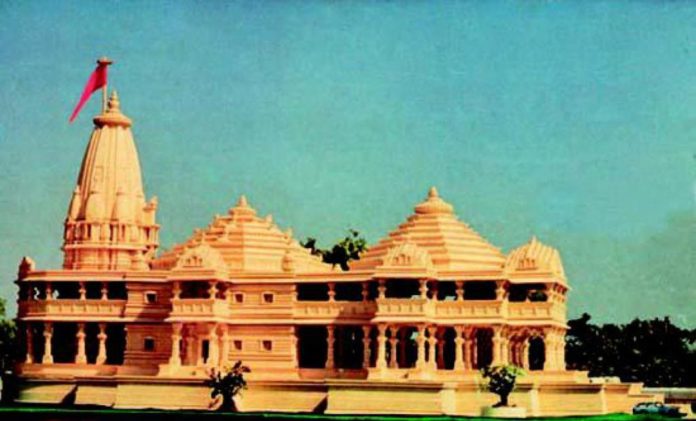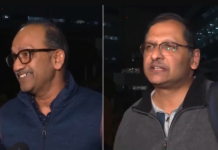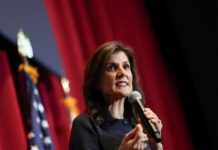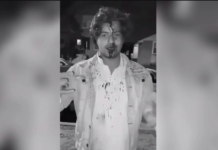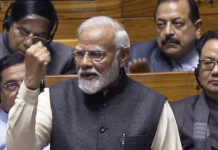For years, Ayodhya’s Ram Mandir controversy has been an unavoidable subject of religious and political debates. With BJP coming to power in Uttar Pradesh, rumors regarding Ram Mandir construction started floating in government corridors. The apex court’s order for an amicable settlement on the Ram Mandir-Babri Masjid dispute came in limelight with reopening of the controversial Ram Janmabhoomi (birth land) case. Yesterday morning, the SC summoned senior BJP leaders including Ms. Bharti, Murli Manohar Joshi, Vinay Katiyar and L.K. Advani for trials. On CBI’s petition, these leaders will be tried for criminal conspiracy for demolishing Ayodhya’s Babri Masjid in 1992, followed by violent protests all over UP.
According to the CBI, the Mosque was brought down by thousands of aggravated Hindu extremist volunteers on December 6, 1992. The investigating authorities filed criminal charges against 10 senior leaders from BJP. Now that the case has been reopened, the media is busy approaching all top-notch BJP politicians for comments. Union minister for water development, water resources and Ganga rejuvenation Ms. Uma Bharti denied all charges.
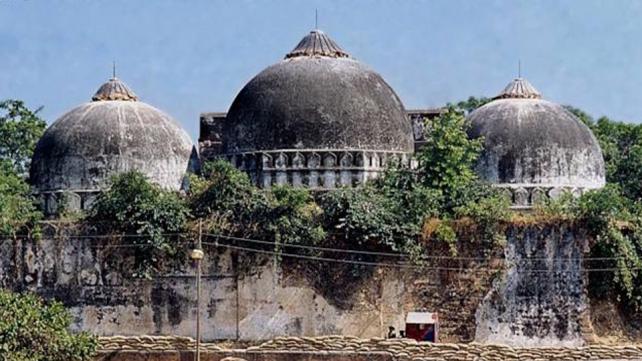
As per the 57-year-old minister, all volunteers were convened to raise voice against injustice in Ayodhya. Whatever happened was unfortunate, but unplanned and BJP had no involvement in whetting the volunteers. Ms. Bharti also stressed on the fact that all leaders would respect SC’s decision. They’re ready to go to prison and would accept capital punishment for the sake of Ram Mandir in Ayodhya.
As of now, we’re waiting for the court to start their trials. Here’s a timeline of all the happenings.
Here’s How Ayodhya Ram Mandir Controversy Spread Like a Forest Fire…
- 1853: During Nawab Wajir Ali Shah’s reign, a group of Hindu extremists (Awadh Nirmohis) claimed that King Babar demolished an ancient temple of lord Rama to build Babari Masjid. Minor protests took place, but they were quelled by the Muslim rulers.
- 1859: To curb regional violence, the British colonial Administration divided the Ram Janmabhoomi into two portions—inner and outer courts. The outer court was allotted to the Hindus whereas the Muslims used the inner court for Namaaz.
- January 1885: A priest named Mahant Raghubir Das sought permission of the court to construct a canopy on the platform present outside the mosque. The Faizabad district court rejected his plea on the grounds that it could fuel communal disagreements.
- 1949: An anonymous group placed an idol of Lord Rama in the mosque area. Aggravated Muslims sought judicial help. Consequently, both Hindus and Muslims filed their own set of petitions. Seeing no way out, the government declared it as a ‘disputed property’ and locked it down.
- 1950: After the Independence, Mahant Paramhans Ranchandra Das and Gopal Singh Visharad requested Faizabad court to allow Hindu devotees to offer their prayers at Ram Janmabhoomi. Though the courtyard was kept locked, the court agreed to allow devotees for prayer outside.
- 1959: The Nirmohi Akhada (wrestling arena) filed a lawsuit claiming they were legal custodians of this property.
- 1961: The Sunni Central Board of Waqf involved itself in the case. They claimed that it was unethical to place idols inside the mosque and claimed that the surrounding area was a graveyard.
- 1984: A group of Hindu volunteers led by BJP leader L.K. Advani formed a group to spearhead Ram Mandir construction at the disputed site.
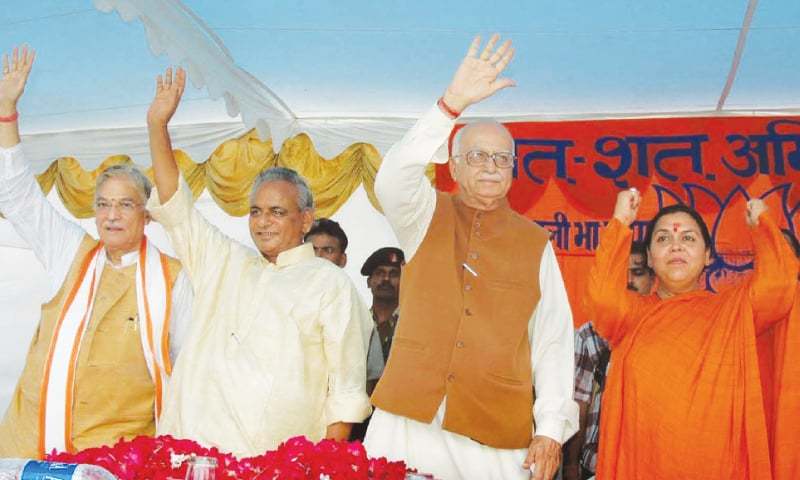
The SC reopened charges against BJP leaders for 1992 case. - 1986: On the plea of Hari Shankar Dubey, the district court opened the gates of the property and allowed Hindus to worship their idols there. The Muslims were hurt by this decision. They turned to the judiciary for help. Consequently, a Babri Mosque Action committee was constituted.
- 1989: The Hindu devotees formed a VHP (Vishwa Hindu Parishad) to lay the foundation of the temple on the land adjoining Babri Mosque. Former VHP VP Deoki Nandan Agarwal filed a case requesting the court to shift their mosque elsewhere. Seeing the escalating number of lawsuits, Faizabad district court transferred all petitions to the High Court.
- 1990: VHP volunteers tried to damage the mosque. The issue was controlled with PM Chandrashekhar’s interference. However, all attempts of negotiations failed. In September, Advani organized a Rath Yatra to educated people on Ram Janmabhoomi. The march started from Gujarat’s Somnath Temple and proceeded to Ayodhya.
- 1991: BJP led NDA government emerged as the primary opposition party. Ram Mandir controversy caused a shift in power. They formed their government in UP.
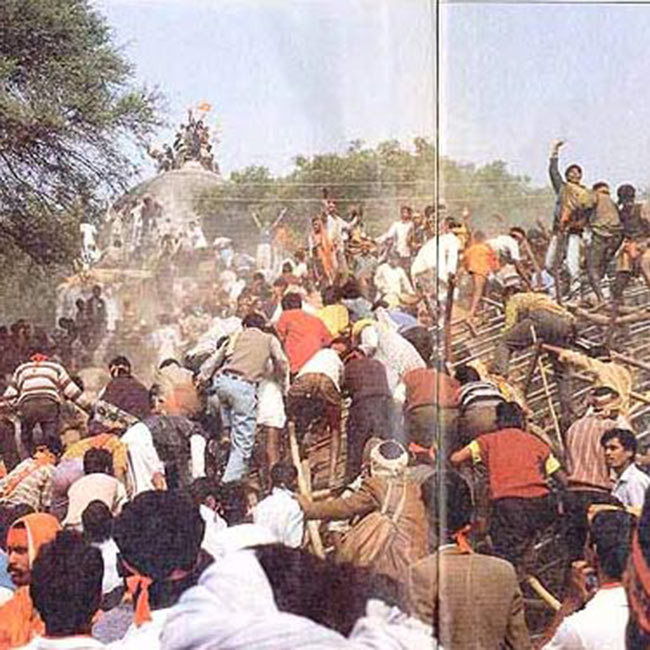
Babri Masjid Photos: The roots of Babri mosque controversy pointed at BJP leaders. - 1992: The Babri Mosque was demolished by Hindu extremists, which resulted in 2,000 casualties. PM Narasimha Rao probed CBI investigation under Justice M.S. Liberhan committee on December 16. The roots of this controversy pointed at BJP.
- 2001: Nearly one decade later, on the 10th anniversary of Babri Mosque demolition, the VHP raises the issue of temple construction. It caused slight tensions within Hindu and Muslim communities.
- 2002: In February 2002, a train that was rumored to carry Karsevaks to Ayodhya for protests was attacked at Godhra in Gujarat. The train was set to fire by Muslim extremists. 58 people were burnt to death. This incident fuelled riots all over the state that killed 1,000 people.Sensing the sensitive nature of the issue, the Allahabad High Court ordered ASI (Archaeological Survey of India) to explore the Ram Janmabhoomi to find out if a temple actually existed on the site.
- 2003: After a year the ASI confirms that a temple actually existed on the site. Muslim organizations refused to accept their findings. They protested against their survey. Meanwhile, the court summoned 7 Hindu leaders for trials on Babri Mosque. L.k. Advani was the primary accused in this case.
- 2005: A group of Islamic militants attacked the disputed property. The security forces were employed to kill six militants.
- 2009: The Liberhan Commission submitted a report accusing BJP leaders of fuelling violence in UP. This caused uproar in the Parliament as the NDA blamed Congress for framing them.
- 2010: The high court gives it judgment. They divided the land into three portions. One plot was allotted to Hindu Mahasabha for constructing temples. The second plot was allotted to Waqf Board for mosque and the remaining part was given to Nirmohi Akhada. Both Hindu and Muslim groups moved to SC against HC’s ruling.
- 2011: The SC puts a stay on HC’s order.
- 2015: The VHP initiated a nationwide drive to collect stones for construction of Ram Temple. Two trucks filled with stones were sent to Ayodhya. The former CM of Uttar Pradesh Mr. Akhilesh Yadav didn’t allow the extremists to construct temple.
- March 2017: With BJP coming to power in UP, people were confident it’ll initiate temple construction. The SC reopened charges against BJP leaders for 1992 case.
- April 2017: The SC summoned BJP leaders to court.
So, this is how the infamous Ram Mandir issue took shape for nearly two centuries. Now the entire country looks forward to the SC’s final verdict.


